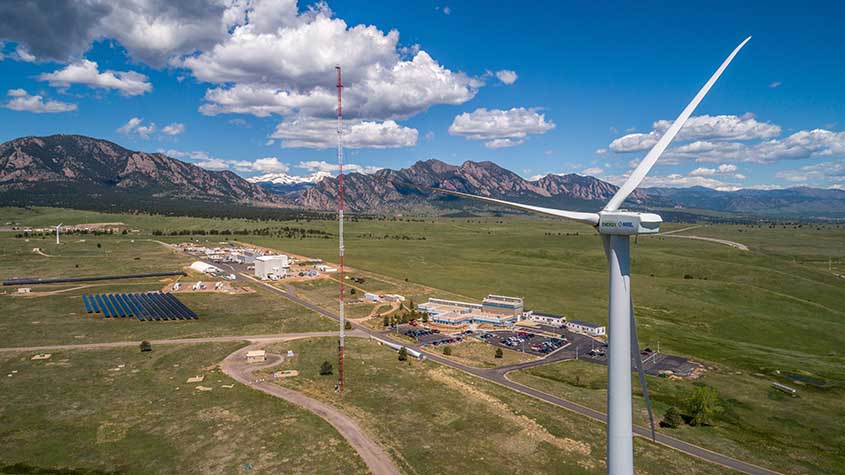Aided by the U.S. Department of Energy’s Grid Modernization Laboratory Consortium, three national laboratories will set up a “FlexPower” hybrid renewable energy testing facility to identify synergies between the technologies.
National Renewable Energy Laboratory (NREL) researchers, along with the Idaho National Laboratory, and Sandia National Laboratories will develop the hybrid plant at NREL’s Flatirons campus in Arvada, Colorado.
The multi-megawatt facility will explore the ability of hybrid (solar and wind) power plants to operate as fully dispatchable and flexible energy sources when paired with energy storage. NREL said these hybridized power plants would be able to operate in day-ahead and real-time energy markets and provide essential reliability and resiliency services to the grid.
Many kinds of storage options will be tested, including batteries, pumped hydropower, flow batteries, hydrogen, kinetic storage, and ultracapacitor energy storage.
Additionally, the project will develop advanced control strategies and explore forecasting techniques. Sophisticated controls can improve dispatchability and capacity factors of variable generators like solar and wind by taking advantage of their complementary nature, often with minimum or zero transmission buildup, said NREL.
The project looks to provide strategies to reduce renewable energy curtailment, a problem for solar in states with high capacity, as well as increase overall production, and smooth variability.
According to NREL, hybrid renewable sites are dynamic, and can provide essential reliability services as well as new types of services in an evolving energy environment. For example, hybrid systems can provide black start services, can operate in islanded mode, and can participate in power system restoration schemes.
Results from the FlexPower study will be available through the public domain. The labs will share the project’s controller architecture and control codes, energy hybridization-potential assessment maps and databases, regional impact studies, reports, publications, and webinars.
The facility will also be available as a test bed for control and equipment vendors to study hybrid controls and hardware, as a venue for workforce education, and as a validation platform for standardizing hybrid technologies.
This content is protected by copyright and may not be reused. If you want to cooperate with us and would like to reuse some of our content, please contact: editors@pv-magazine.com.









By submitting this form you agree to pv magazine using your data for the purposes of publishing your comment.
Your personal data will only be disclosed or otherwise transmitted to third parties for the purposes of spam filtering or if this is necessary for technical maintenance of the website. Any other transfer to third parties will not take place unless this is justified on the basis of applicable data protection regulations or if pv magazine is legally obliged to do so.
You may revoke this consent at any time with effect for the future, in which case your personal data will be deleted immediately. Otherwise, your data will be deleted if pv magazine has processed your request or the purpose of data storage is fulfilled.
Further information on data privacy can be found in our Data Protection Policy.